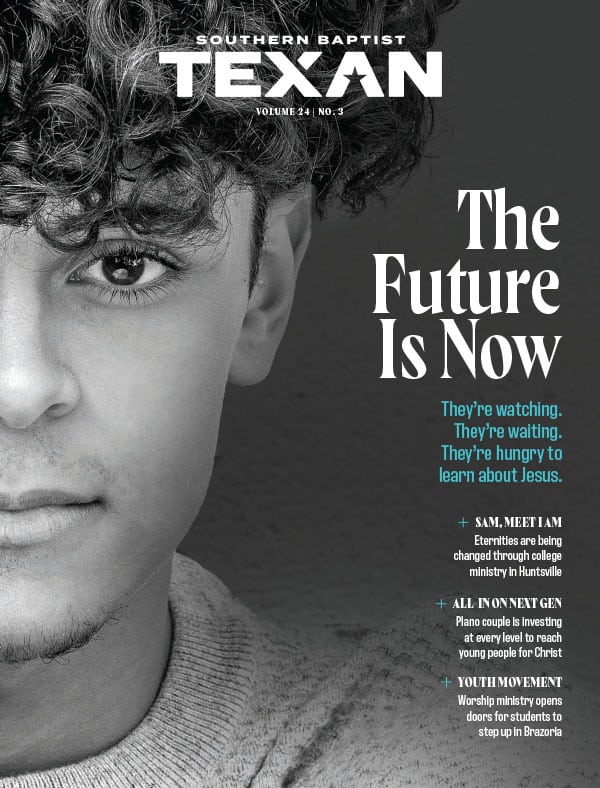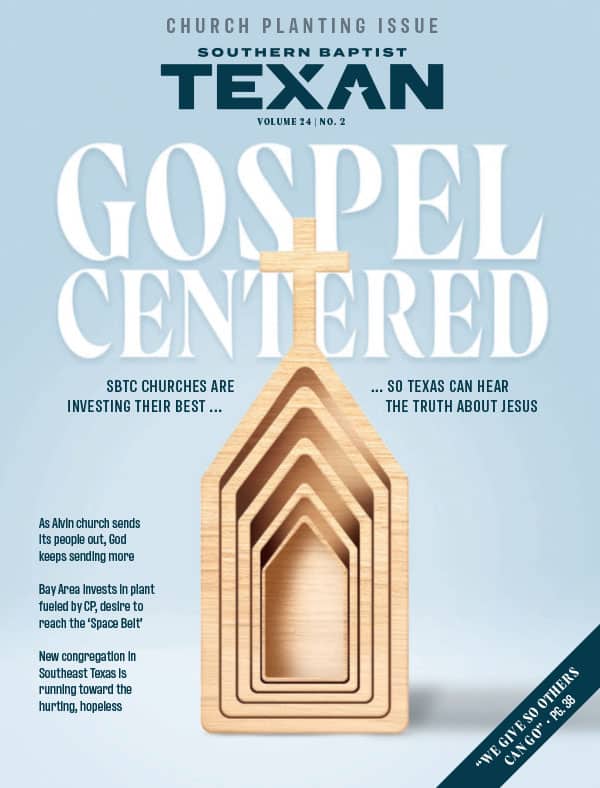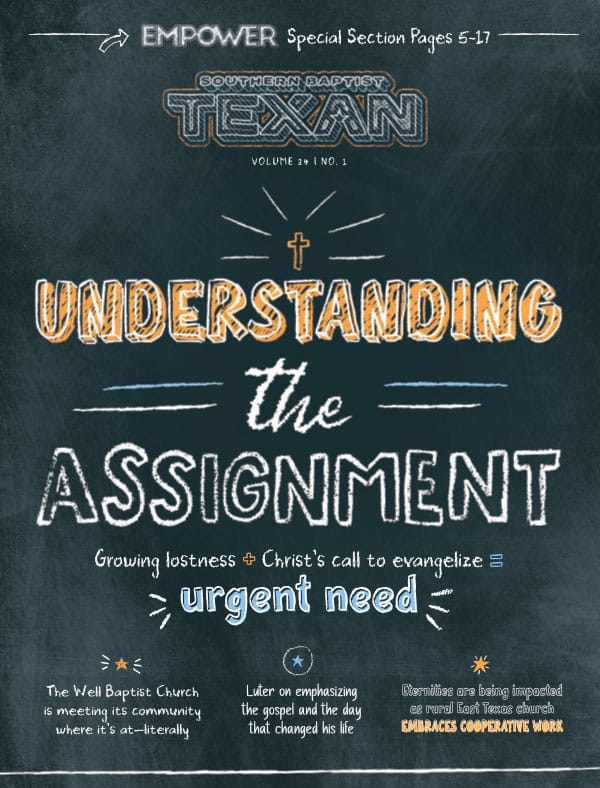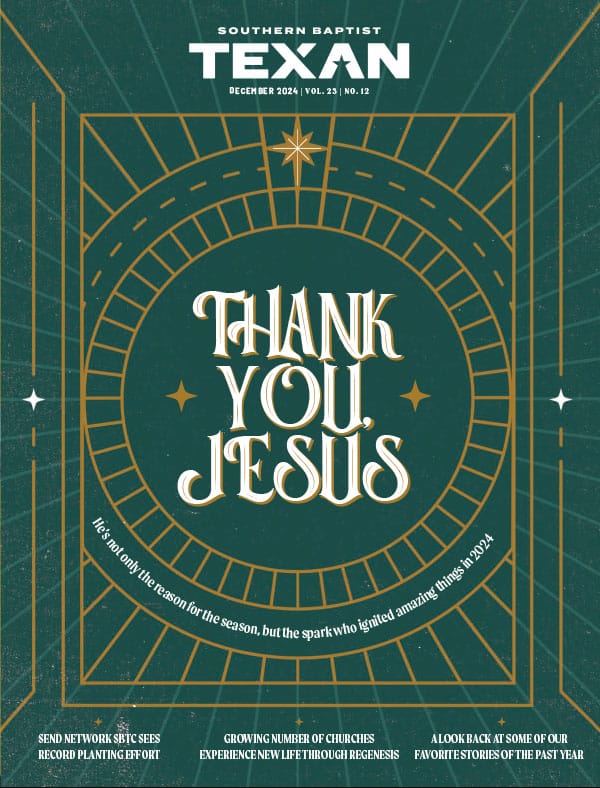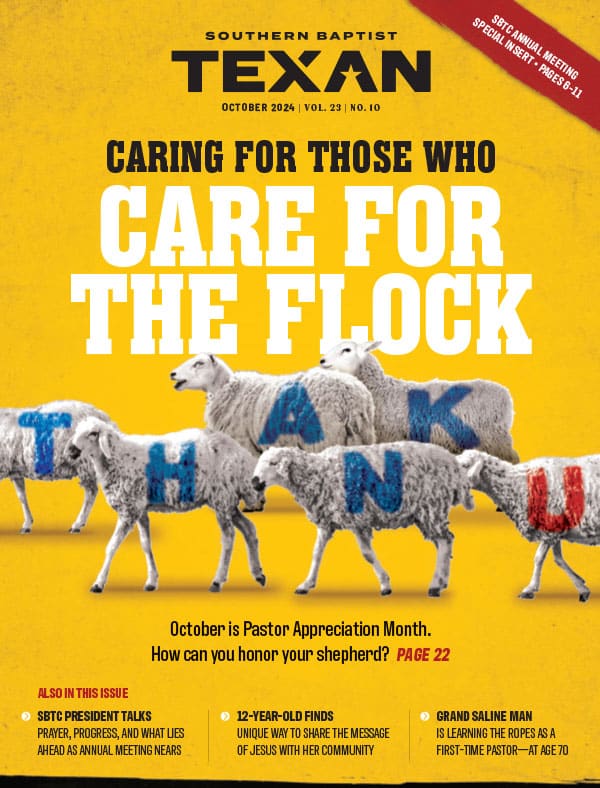FORT WORTH?Southwestern Baptist Theological Seminary in Fort Worth is now home to portions of the Dead Sea Scrolls, thanks to a lead gift from a trustee that made their purchase possible, SWBTS President Paige Patterson announced Jan. 20 during a press conference.
In acquiring the scroll fragments, Southwestern becomes the third American institution to own pieces of the scrolls, joining the University of Chicago and Azusa Pacific University. The three scrolls now in the seminary’s possession are the world’s oldest copies of portions of Exodus 23, Leviticus 18 and Daniel 6.
Trustee Gary Loveless, founder and chief executive of Houston-based Square Mile Energy, presented the tiny artifacts, mounted and framed for preservation, to Patterson in Southwestern’s chapel service on Jan. 20.
 |
|
Southwestern Seminary archaeology professor Steven Ortiz holds a pen made from a palm tree found in a cave along with the Dead Sea Scrolls. |
20TH CENTURY’S GREATEST FIND
These scrolls are part of a larger body of biblical texts and other writings discovered in 1947 in a cave at Qumran on the northwestern shore of the Dead Sea in Israel. Portions of every Old Testament book but Esther have been found at Qumran.
Since their discovery, scholars have studied the Dead Sea Scrolls extensively with some calling them the greatest archaeological find of the 20th century.
Peter Flint, co-director of the Dead Sea Scrolls Institute at Trinity Western University in British Columbia, underscored the importance of the find, stating, “We are dealing today with the greatest find of our times…. the Dead Sea Scrolls are the oldest copies of the Bible in the world. They are more than 1,000 years older than anything we had before,” said Flint, alluding to the later-copied Masoretic text of the Hebrew scriptures.
Not only do the Dead Sea Scrolls include the oldest extant copies of the Old Testament, Flint said they are the only surviving Hebrew scriptures from the Second Temple Period (536 B.C.-70 A.D.).
Nearly 10 years of excavation in the Qumran caves produced fragments from approximately 825 to 870 separate scrolls containing biblical manuscripts, biblical manuscripts with commentary, apocryphal manuscripts and extra-biblical literature.
The Dead Sea Scrolls have made a profound impact on biblical studies, especially in the area of scribal transmission.
“Any piece of the Dead Sea Scrolls is significant because it shows us what the state of the Hebrew text of the Bible was 2,000 years ago, which gives us a way to measure whether or not they’ve been faithfully transmitted over the last 2,000 years,” Weston Fields, executive director of the Dead Sea Scrolls Foundation, said in a phone interview with the seminary. The Dead Sea Scrolls Foundation is an organization dedicated to the publication, conservation and preservation of the scrolls.
“And what they do tell us is that there has been very little change,” Fields said. “They show how faithfully the Bible has been transmitted.”
A SCHOLAR’S DREAM
The acquisition of these rare scrolls is a particular boon to Southwestern’s archaeology program.
Steven Ortiz, associate professor of biblical backgrounds and archaeology and director of SWBTS’ Charles Tandy Museum, said: “I couldn’t dream as an archaeologist of being able to handle these or even having access to them. As a young graduate student, you read about the Dead Sea Scrolls in all your textbooks, you dream about them, you recount the discoveries of the Dead Sea Scrolls. Students in our program will also have that same type of discovery of not just reading about them in a textbook, but we have the actual scrolls.”
Ortiz said that in addition to serving as a teaching tool, he expects the scrolls will attract many scholars to Southwestern.
“There will be a flood of scholars coming here that will create a synergy for our students to sit at the feet of scholars in biblical studies, in Dead Sea Scrolls research, in biblical archaeology, and I’m looking forward to that time of engagement for our students and also for our faculty,” Ortiz said.
Amid all the excitement, Patterson showed particular enthusiasm over the acquisition of the Daniel scroll, which he said corroborates the book of Daniel’s claims about its authorship and date of writing?claims long discounted by secular scholars.
“It was clear that these were copies of copies of copies so that it established the certainty that Daniel was written when it claims to have been written,” Patterson said of the fragments of Daniel found among the Dead Sea Scrolls.
FOR THE GLORY OF GOD
Loveless and Patterson declined to reveal the price paid for the scrolls except to say that it was very large.
“This is the doing, primarily, of Mr. and Mrs. Loveless and their generosity and their interest in the project. The actual figures involved?I can just tell you that you could buy a suit or two with it,” Patterson said.
In explaining the rationale for his decision to help obtain the scrolls for Southwestern, Loveless expressed a desire to see the scrolls stored in a place where he was assured that their sacred nature would be respected.
“Although we can’t deny or ignore the historical or archaeological value of these fragments, it is most important to me and Stephanie that they are in the hands of those who will acknowledge and honor their Christian and Jewish heritage and significance. It is for that reason that there is no better institution than Southwestern in our opinion to secure these for the glory of God.”
The scrolls will be housed in a new library to be named for Loveless’ grandmother. The scrolls will be available for public viewing upon its completion, scheduled for May 2011.
?Keith Collier of Southwestern Seminary contributed to this report.








